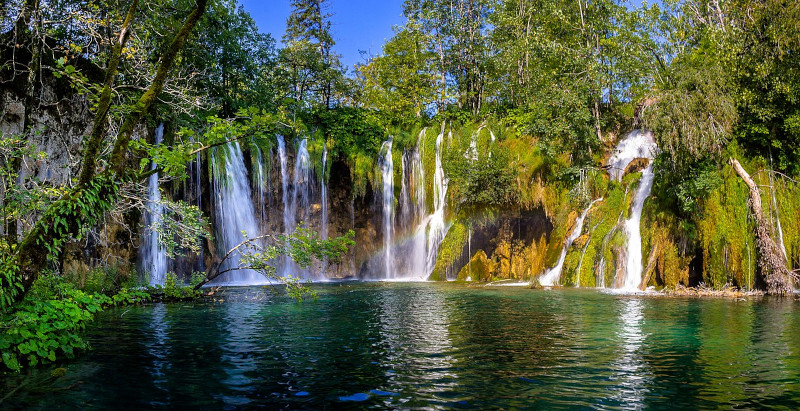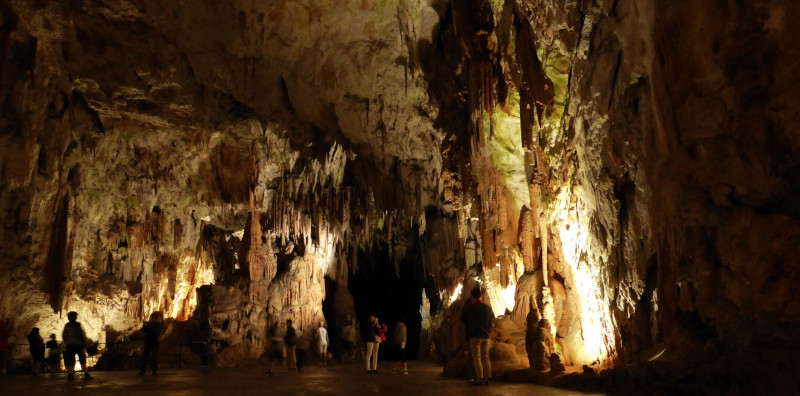Postojna Cave Facts
- The term of Postojna Cave serves as the name of a truly magnificent creation of time and geological processes. The name, however, also remains somewhat deceptive. That’s because the site actually comprises an entire cave system, not a single cavern.
- The first recorded mention of this natural marvel occurred in the latter part of the 17th century. The well known natural historian Johann Weikhard von Valvasor holds that footnote in history. He’s best known for his groundbreaking study of karst phenomena.
- Evidence indicates, though, that local populations knew of the existence of the site long before his discovery of it. This holds true since ancient writings, a form of graffiti, appear on some walls. Those writings, in fact, date back to at least the year 1213.
- Currently, this masterpiece of Nature forms one of the leading tourist sites of its region. It’s draws include its great natural beauty, modern history, and sheer physical size. That specific aspect holds true because it’s the second longest such system in the region.
- Due to these factors, Postojna Cave attracted almost 1 million visitors per year at its peak, in the 1990’s. Given its popularity, a permanent exhibition opened within its confines in 2014. This location includes the only known underground post office.
- It also represents a proposed addition to the list of UNESCO World Heritage Sites. For the moment, however, no action has yet been taken on that proposal. Given its beauty, as well as its role in the modern history of the region, it would make a fine addition.
Related Articles



Postojna Cave Physical Description
The majestic Postojna Cave distinguishes itself from many others in a marvelous manner. That’s because many can claim great size or remarkable visual appeal. This site, however, forms one of the minority that rightfully hold claim to both attributes.
In total, the mind-boggling system of caves and tunnels stretches for a known length of roughly 79,130 ft (24,120 m). Put in other terms, that equals approximately 14.99 mi (24.12 km) of underground beauty to explore. This could potentially be expanded.
The marvelous system itself comprises four currently known caverns. Each has its own distinctive beauty and splendor. This consists of such natural formations as stalactites and stalagmites, of course. It also includes others, known as draperies or curtains.
To top off this scenic marvel, a small river still flows through the depths of Postojna Cave. This flow of water, named the Pivka River, wends its way placidly through the many passageways of the system, even today. Its presence only augments the wonder of the site.
Postojna Cave Location, Formation, and Ecosystem
The geological splendor of Postojna Cave formed in a somewhat isolated portion of the globe. That region consists of the southern section of the continent of Europe. More precisely, it formed in the country that now bears the name of Slovenia.
Even more exactly, this places it surrounded by the countries of Italy, Austria, Hungary, and Croatia. Within that country itself, the site lies in the southwestern portion. Its name reflects its proximity to the town of Postojna, in the region of Inner Carniola.
This incredible system owes its existence to the same body of water that still flows through it today, the Pivka River. That flow enters what now forms the system through a subterranean tunnel, close to its entrance. The system has an average depth of 337 ft (115 m).
Over many millions of years, the actions of the river carved out the location as we currently know it. The age of the site, as it’s known today, measures roughly 2 million years. Many of the formations within its confines reflect this age with their relatively huge size.
Impressively, during that time, an entire ecosystem formed within its boundaries. A nearly constant temperature of 46.4 – 50 F (8 – 10 C) is naturally maintained inside. This, in turn, provides a home to some amazing endemic species of fauna.
Among those creatures in Postojna Cave is the Olm. That aquatic salamander lives only within the system. That makes it the only such restricted creature of its kind in Europe. In fact, this site’s considered by many to be the most biologically diverse cave on earth.
Features Sharing Its Region



Check out our other articles on 4 Bizarre Marine Fish, Victoria Falls, Rusty-Spotted Cat, Death Apple Tree, Bonnethead Shark, Chinese Mantis, Rainbow Snake, Black-and-white hawk-eagle












Leave a Reply